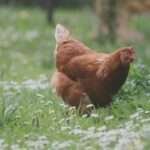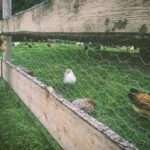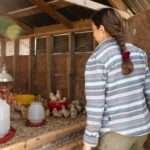Raising chickens brings a plethora of rewards to any backyard: farm-fresh eggs, lively clucks, and even natural pest control as your feathered companions forage and scratch. Yet, nestled within these delightful benefits lies a challenge that every poultry keeper must address—dealing with chicken poop. As diligent as our feathered friends may be, their exuberant droppings have a way of finding their way into unexpected places, raising questions of how to harness their nutrient-rich potential while keeping your surroundings clean and tidy.
In this comprehensive guide, we delve into the art of dealing with chicken poop, providing you with practical solutions for collection, composting, and utilizing this valuable resource to enhance your garden soil. From setting up a simple roost platform to embracing the concept of composting and blending, we’ll explore the steps you can take to turn chicken waste into garden gold. Let’s embark on this journey of responsible poop management that not only contributes to a healthier garden but also harmoniously coexists with your backyard haven.
Dealing With Chicken Poop: Proper Management
Before we delve into the nitty-gritty of poop management, let’s take a closer look at the substance itself. Chicken poop, often colloquially referred to as “chicken manure,” is a potent blend of waste products excreted by our feathered companions. Comprising not only feces but also urine, it contains a rich mix of essential nutrients that plants thrive on, including nitrogen, phosphorus, and potassium.
While chicken poop’s nutrient content is a boon for garden soil, its propensity to smear and stick can pose challenges. Without proper management, chicken droppings can turn walkways, patios, and other high-traffic areas into less-than-pleasant landscapes. This is where smart strategies for collection and utilization come into play, enabling you to harness the benefits of chicken poop while preventing unwanted messes.
Collection Solutions: The Roost Platform Method
An effective and straightforward method for managing chicken poop involves setting up a roost platform underneath your chickens’ roosting area. This overnight perch becomes a designated “poop collection zone,” saving you both time and effort when it comes to cleanup. The roost platform method offers several key advantages:
- Easy Cleanup: By collecting droppings in one concentrated area, you minimize the need to scour your entire backyard for scattered waste.
- Preventing Buildup: The roost platform method prevents excessive poop accumulation beneath the roost, reducing the risk of health issues for your chickens.
- Resource Utilization: Collected droppings can be conveniently used for composting or blended with other materials for garden enrichment.
Setting Up a Roost Platform:
Creating a roost platform is a simple yet effective task that requires minimal materials and effort. Here’s how to set it up:
- Select a Suitable Location: Choose an area beneath your chickens’ roosting spot where you can easily place a platform or tray. It should be well-ventilated and allow for straightforward access.
- Choose the Platform: Opt for a sturdy platform or tray made of materials like wood or metal. Ensure it is easy to clean and can withstand the weight of the droppings.
- Position the Platform: Place the platform directly beneath the roosting area, aligning it with the direction in which your chickens perch.
- Lining and Cleanup: For easy cleanup, line the platform with absorbent materials such as straw or wood shavings. Regularly remove and replace the lining to maintain cleanliness.
By implementing the roost platform method, you not only streamline poop collection but also create a designated space for valuable resources that can benefit your garden’s health and productivity.
In the following sections of this guide, we’ll delve into the importance of fencing to keep chicken poop in designated areas, the art of composting chicken waste, and the benefits of blending chicken poop with other organic materials for optimal soil enrichment. By the end, you’ll be equipped with a range of strategies to effectively manage chicken poop while maximizing its potential to nurture your garden’s growth.

Fencing: Keeping Chicken Poop Where It Belongs
While the roost platform method effectively concentrates droppings for easy collection, addressing the issue of chicken poop smearing across undesired areas requires a more comprehensive approach—fencing. Creating designated zones for your chickens to roam freely while keeping sensitive spaces poop-free is a strategic solution to keep chickens off your porch. This promotes harmony between poultry keeping and property management.
The Power of Fencing: Fencing plays a pivotal role in managing chicken poop distribution. Defining specific areas where your chickens can forage and roam, you effectively control their access and influence over your backyard. Fencing serves a dual purpose: it safeguards keeping chickens off your porch while encouraging your chickens to explore and engage in their natural behaviors.
Types of Fencing: When considering fencing options, there are several routes you can take:
- Temporary Barriers: Temporary fencing materials allow you to create adjustable zones for your chickens to explore. These barriers can be shifted as needed to protect different areas over time.
- Permanent Structures: For a more lasting solution, you can install permanent fences using materials like wire mesh or wooden pickets. Permanent structures are ideal for safeguarding larger sections of your property and creating defined boundaries.
- Exclusionary Fencing: This specialized approach targets specific areas you want to keep off-limits to your chickens. For example, you might encircle your vegetable garden with a higher fence to deter chickens from accessing the area.
Benefits of Fencing: Fencing offers several notable benefits beyond managing chicken poop:
- Preserving Sensitive Areas: Fencing protects high-traffic pathways, outdoor seating areas, and other spaces where chicken droppings would be unwelcome.
- Enhancing Garden Productivity: Fenced-in garden beds can remain undisturbed, allowing plants to flourish without the disruption of scratching chickens.
- Reducing Overgrazing: Fencing prevents chickens from continuously foraging in the same area, helping to prevent soil erosion and promote a healthier landscape.
Educating Your Chickens and Family:
Introducing chickens to the concept of fencing requires patience and consistent training. Encourage your chickens to explore the designated zones within the boundaries you’ve established. Over time, they’ll become accustomed to their roaming areas and gradually avoid the fenced-off sections.
Additionally, educating your family about the importance of fencing can contribute to a harmonious coexistence between chickens and your outdoor space. Teach children the significance of designated areas and the role of fencing in protecting specific zones. By involving the whole family in the process, you foster a sense of responsibility and ensure everyone plays a part in maintaining a clean and enjoyable backyard environment.
In the upcoming sections, we’ll delve into the art of composting chicken poop, blending it with other organic materials for optimal garden enrichment, and exploring the benefits of utilizing chicken waste to nurture your soil. By the end of this guide, you’ll be well-equipped with strategies to manage chicken poop effectively, creating a balance between the joys of poultry keeping and the preservation of a tidy and thriving outdoor space.
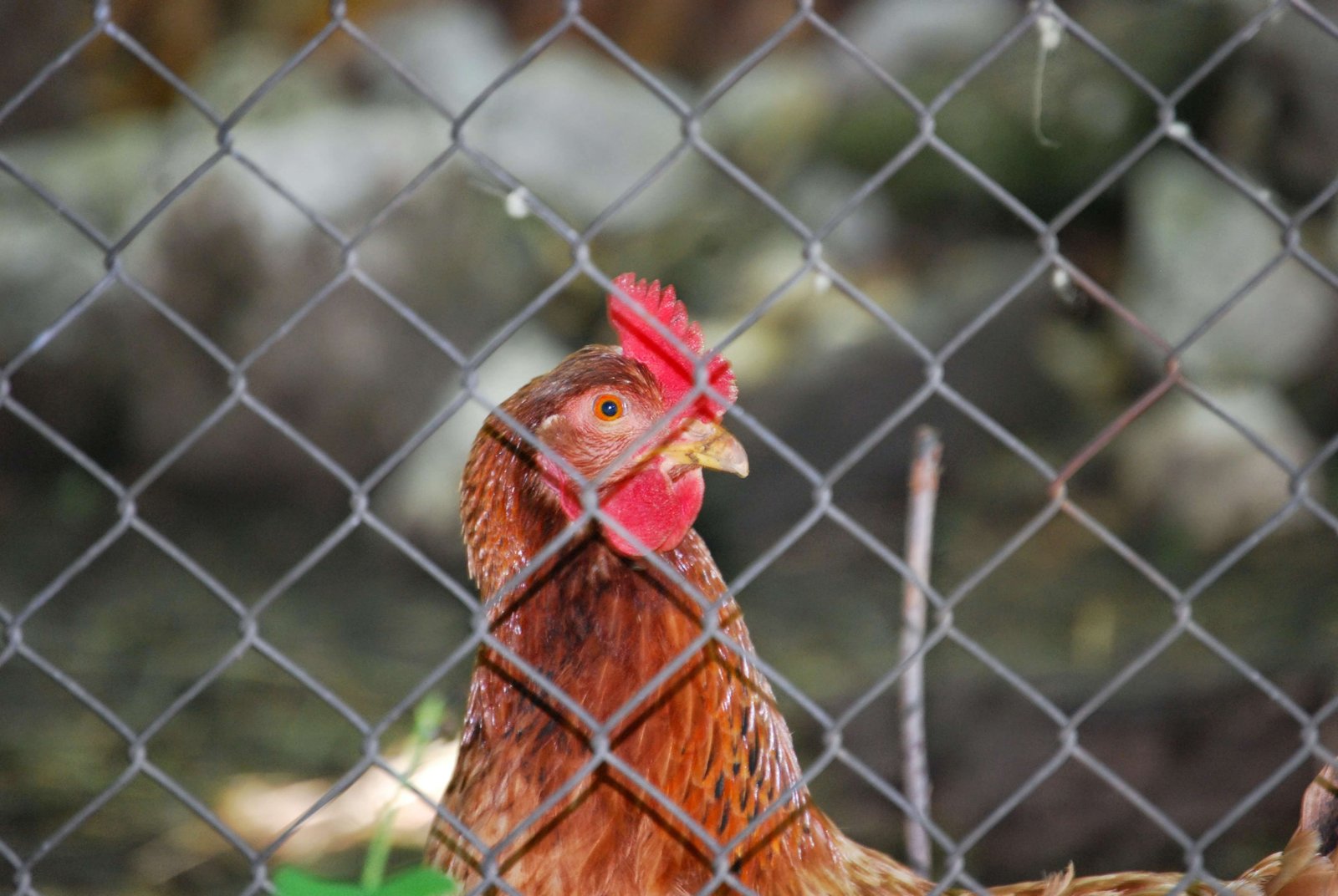
Composting Chicken Poop: Turning Waste into Garden Gold
As we journey further into the realm of managing chicken poop, we arrive at a transformative practice that harnesses its nutrient-rich potential—composting. Composting chicken waste not only reduces waste but also creates a valuable resource that enriches your garden soil, promoting plant growth and vitality.
Embracing the Composting Process: Composting involves the natural breakdown of organic materials into nutrient-rich humus through microbial activity. Chicken poop, combined with other carbon-rich materials, undergoes decomposition, resulting in a dark, crumbly substance that gardeners fondly refer to as “black gold.”
Creating a Chicken Poop Compost Pile: Here’s how you can start composting chicken poop effectively:
- Collecting Materials: Gather a mix of chicken droppings and carbon-rich materials such as straw, leaves, or wood shavings. Carbon materials balance the nitrogen content of chicken poop and aid in the decomposition process.
- Layering: Alternate layers of chicken poop with carbon materials to create a balanced compost pile. Aim for a ratio of roughly two parts carbon to one part nitrogen (chicken poop).
- Turning and Aeration: Regularly turn the compost pile to promote aeration and accelerate decomposition. This allows beneficial microbes to thrive and break down the materials efficiently.
- Moisture Management: Maintain appropriate moisture levels within the compost pile by periodically watering it. The pile should be damp but not soggy.
- Patience and Observation: Composting is a gradual process that typically takes several months to yield finished compost. Be patient and observe the pile’s progress, adjusting as needed.
Benefits of Composting Chicken Poop:
Composting offers an array of benefits for both your garden and the environment:
- Nutrient Enrichment: Finished compost is a nutrient-rich soil amendment that enhances plant health and growth by providing essential nutrients.
- Soil Structure Improvement: Compost improves soil structure, enhancing water retention and drainage while preventing soil compaction.
- Microbial Activity: Compost introduces beneficial microorganisms to the soil, supporting a thriving soil ecosystem and promoting plant resilience.
- Reduced Waste: Composting diverts chicken waste from landfills, reducing your environmental footprint and contributing to a more sustainable lifestyle.
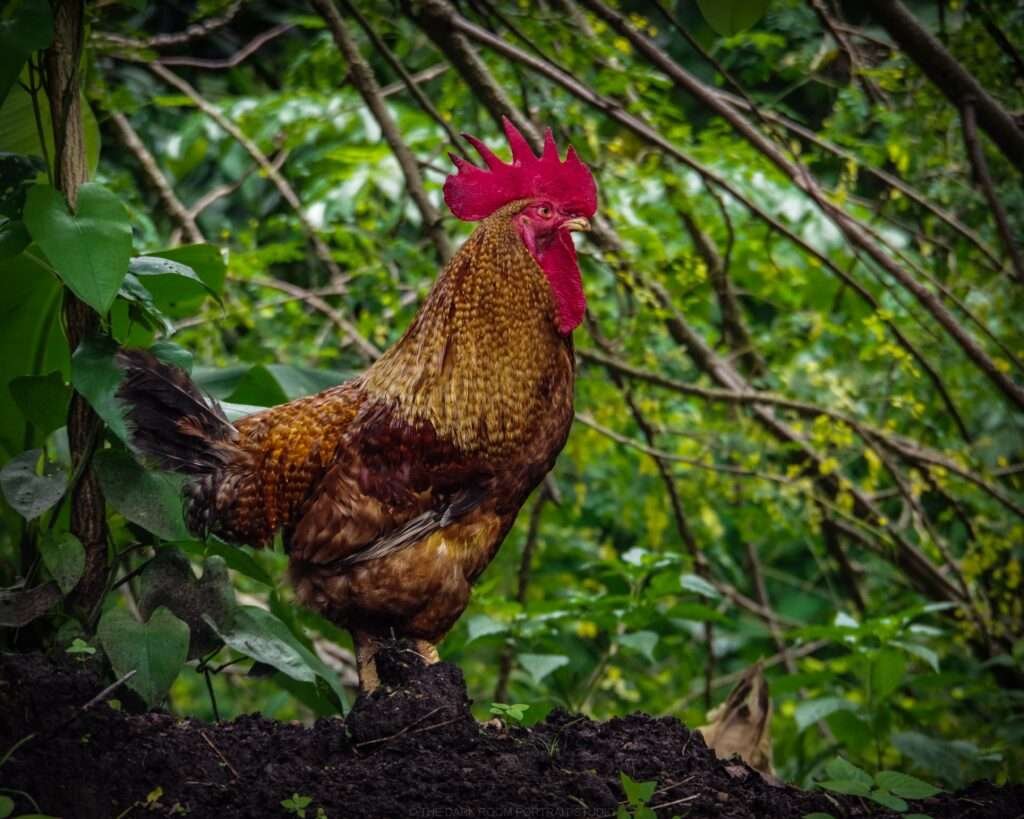
Blending Chicken Poop for Garden Use: Maximizing Nutrient Benefits
While composting chicken poop is an excellent strategy, blending it with other organic materials before applying it to your garden can further optimize its benefits. Blending ensures a balanced nutrient profile, reduces the risk of nutrient imbalances, and prevents the possibility of burning plants due to excessive nitrogen.
Creating a Balanced Blend: When using composted chicken poop in your garden, consider these steps:
- Selecting Compost: Use fully decomposed, mature compost to avoid the risk of burning plants. The compost should have a pleasant earthy aroma and a crumbly texture.
- Blending: Mix the composted chicken poop with other organic materials such as composted leaves, straw, or aged wood chips. Aim for a well-balanced mixture.
- Application: Spread the blended compost over your garden beds or around plants. Gently work it into the soil’s top layer to encourage even distribution.
Chicken Poop: Gold or Curse
By following these practices, you transform chicken waste from a potential challenge into a valuable asset that nurtures your garden and promotes plant vitality. As we conclude this guide, we’ll reflect on the journey of responsible chicken poop management, from collecting it beneath the roost platform to utilizing it as a powerful tool for soil enrichment. With the insights you’ve gained, you’re well-prepared to cultivate a thriving garden while fostering a harmonious coexistence with your feathered friends and keeping chickens off your porch!

